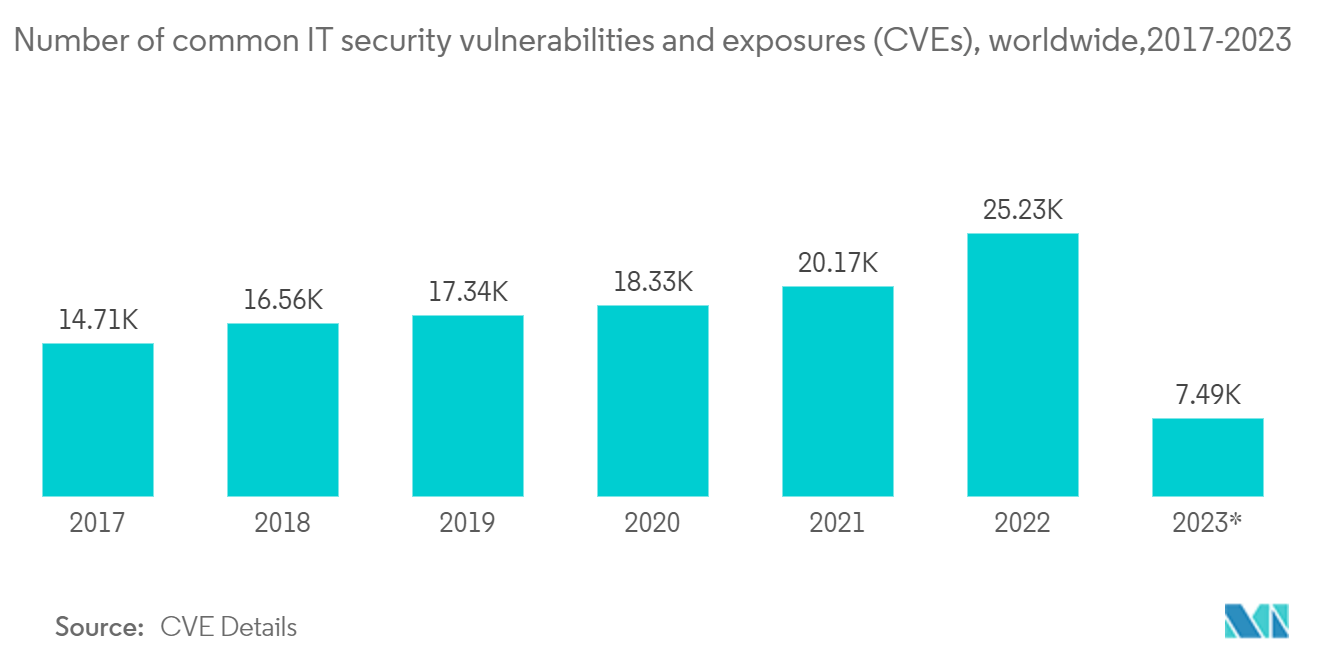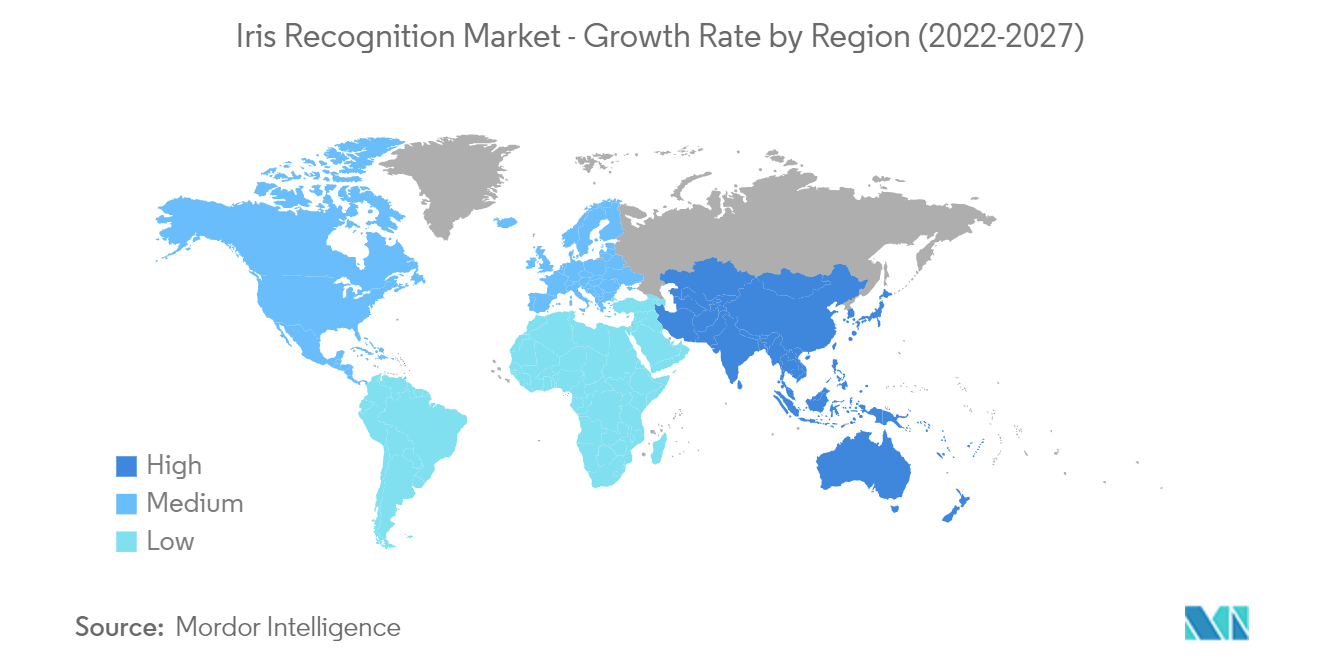Market Trends of Iris Recognition Industry
Healthcare Sector to Experience Significant Growth
- The healthcare industry is plagued with the persistent problem of establishing accurate patient identification. Healthcare management applications are turning toward biometric iris recognition technology. The evolution of current technologies and the development of multi-layered authentication systems at reasonable costs are projected to contribute to the global increase in the use of biometric technology in healthcare systems via iris recognition.
- With its high accuracy and ease of use, iris recognition technology offers an option to identify proper insurance status, preventing fraudulence and duplicate medical records. The patients may benefit as well by getting the correct treatments.
- Furthermore, the use of iris recognition technology helps implement effective authentication and authorization mechanisms in various areas of healthcare, which include tracking the patient registration, treatment, or passageways to different departments, checkup arrangement and scheduling, repetitive treatment, supporting national or private health insurance cards, and ambulant treatment document, among others.
- Technologies, such as iris recognition in patient identification, are gaining momentum in healthcare settings not only for their ability to identify a patient upon entry into a healthcare facility accurately but also for their utility to quickly and accurately identify patients' current location in the hospital among the various departments, such as home health, the ER, and other mobile environments, or in any other location prior to administering long term care.
- Due to new stringent regulations established by the Health Insurance Portability and Accountability Act (HIPPA) to preserve the confidentiality and privacy of patient information, the implementation of biometrics is also predicted to enhance security for patients, doctors, and nurses.

North America to have Significant Market Share
- The substantial increase in data breaches in the region across various industries is proliferating organizations to adopt biometrics, providing users another layer of security to secure themselves.
- Many government bodies have started implementing iris-scanning devices, which are fueling the market's growth in the region. For instance, the Federal Bureau of Investigation (FBI) relies on its partnerships with local, state, tribal, and federal agencies to collaboratively for the development of vital programs such as the National Crime Information Center (NCIC) and the Next Generation Identification (NGI) systems. These systems implement iris recognition as a viable means of identification.
- Also, working with Olive and Dove Company, Iris ID is embracing this biometric technology with the implementation of an iris recognition system that will be supported by home video security and IoT solutions under the brand Remo+. This partnership enables the company to introduce new products that complement and expand the capabilities of access control systems with iris recognition technology.
- According to the Federal Trade Commission, identity thefts related to the payment and banking sector are prominent in the United States, which, in turn, would boost the adoption of secured biometrics solutions. For instance, according to the FBI's Internet Crime Report 2022, the public reported 800,944 cyber-crime complaints to the FBI, a 5% decrease from 2021. The potential total loss, on the other hand, increased to USD 10.2 billion in 2022, up from USD 6.9 billion in 2021. The states with the highest number of cybercrime victims were California, Florida, and Texas. With financial institutes operating in the country, considering the implementation of various identity verification software, iris recognition systems and software are poised to become increasingly relevant.


